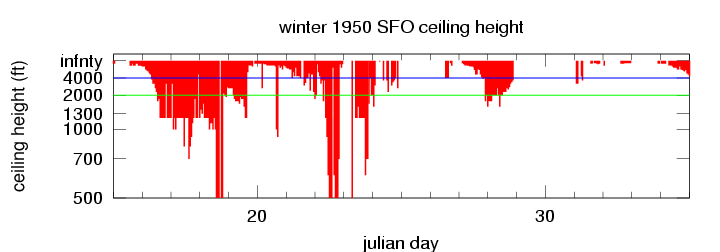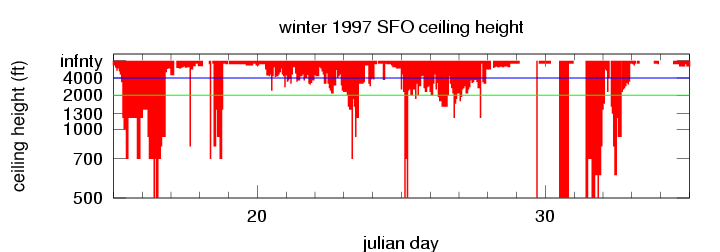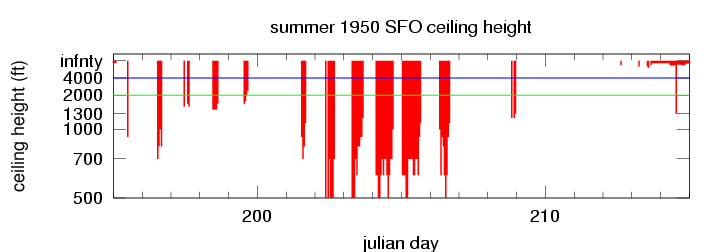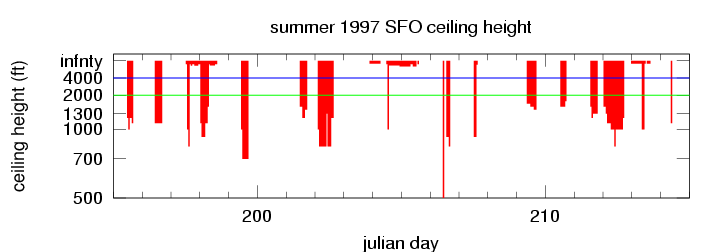As seen above, the summer data often shows the onset of low ceiling
at night, and a burnoff the following morning. Here burnoff is
defined as the ceiling rising to, or above, 4000 feet, which in most cases
is the same time as rising to infinity. The onset of low ceiling
is defined as a ceiling at or below 2000 feet.
Days were found which showed a low ceiling at 4 AM.
The time of onset of low ceiling (with low ceiling unbroken to 4 AM),
and the time of subsequent
burnoff were calculated for these days. Time of onset before midnite
was recorded as -1. Time of burnoff both at or after 1900 PST was recorded as
19. Records for which there was missing data at 4 AM, or for which missing
hourly data prevented the calculation of an onset or burnoff time, were
thrown out. The years 1969-1973 and 1975-1981 had to be thrown out entirely
because the data was spaced every three hours.
Reanalysis data was available only from 1953. We thus produced a data set of
917 events
which showed a low ceiling at 4 AM
during July and August from 1948-1998, for which the burnoff time could be
found in continuous hourly data, and for which reanalysis data was available.
This entire project (almost) can be reproduced by executing the dothis
script within sfoburnoff.tar.gz (11 Mb).
A similar project that predicts the probability of being burned-off at
10 AM, rather than predicting the hour of burnoff, is bundled in
sfoprob.tar.gz (6 Mb).



